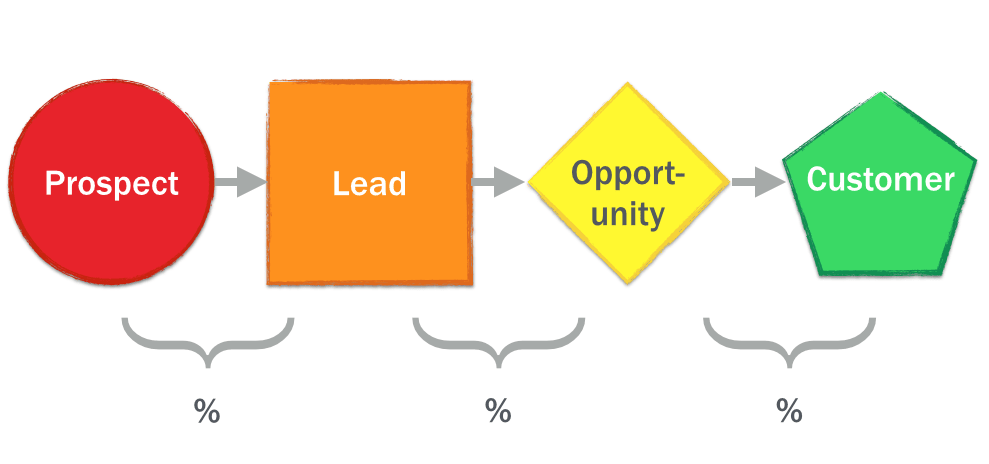There’s a magical property to the classic sales funnel SaaS startups use to evaluate the effectiveness of their go-to-market organizations: an increase in effectiveness at any stage of a sales funnel cascades through to the end funnel. But improvements to the early parts of the funnel are more important than those later in the funnel, because they meaningfully improve key SaaS metrics like cost-of-customer acquisition and pay-back period.
Most startups employ a four stage funnel: prospect, lead, opportunity, customer. Typically, a prospect is an email of a potential customer. A Sales Development Rep (SDR) qualifies the prospect to a lead. The lead is then passed to an Account Executive (AE) who qualifies it further into an opportunity and works to close the deal, yielding a customer. The yield from one part of the funnel varies quite a bit depending on the startup’s sector, how the business acquires leads, the competitive dynamics in the sector and the qualification regimen of the company.
Let’s compare three different funnels each starting with 1000 leads and yielding 125 customers. Funnel 1 pushes 50% of leads through each step. In Funnel 2, SDRs filter 70% of prospects up-front. In Funnel 3, Account Executives whittle down the high volume of SDR-qualified leads late in the process.
| Funnel | Prospect | Lead | Opportunity | Customer |
|---|---|---|---|---|
| 1 | 1000 | 500 | 250 | 125 |
| 2 | 1000 | 300 | 150 | 125 |
| 3 | 1000 | 750 | 500 | 125 |
For each funnel, we’ll improve yield at a different step. In Funnel 1, the prospect-to-lead ratio increases by 10%. Same for Funnel 2’s Lead-to-Opportunity ratio and Funnel 3s Opportunity to Customer Ratio.
| Funnel | Prospect | Lead | Opportunity | Customer |
|---|---|---|---|---|
| 1 | 1000 | 550 | 275 | 137.5 |
| 2 | 1000 | 300 | 165 | 137.5 |
| 3 | 1000 | 750 | 500 | 137.5 |
No matter where the incremental 10% improvement occurred in the funnel, the business benefits from a 10% growth in customers. This conclusion can be counterintuitive at first, but it works because of the commutative property of multiplication.
For startups, this hypothetical implies that any efficiency or yield improvement in the sales funnel is equally as valuable as another of the same magnitude.
But consider the question of time efficiency for a startup. Let’s assume an SDR requires 5 minutes to evaluate a prospect, an AE needs 30 minutes to qualify a lead to an opportunity and the AE invests 4 hours to convert an opportunity to a customer. The table below shows the total hours required by each step.
| Funnel | Lead | Opportunity | Customer | Total | SC CAC ($) |
|---|---|---|---|---|---|
| 1 | 83 | 275 | 825 | 1183 | 403 |
| 2 | 83 | 150 | 450 | 683 | 229 |
| 3 | 83 | 375 | 1125 | 1583 | 543 |
The third funnel is 2x more expensive in time as the second requiring 1583 hours to produce 137.5 customers compared to 683 hours.
The sales-contribution to the cost-of-customer-acquisition which is abbreviated SC CAC in the table above, increases from $228 to $543 for Funnels 3 compared to 2. In other words, this time efficiency doubles how much money the sales team invests to acquire a customer. Keeping the SC CAC low will increase payback periods, sales efficiency and many other go-to-market metrics, enabling your startup to grow faster with less capital required.
This is why investing in improvements at the top of the sales funnel, particularly in early prospect and lead qualification are so valuable: they save the time and energy of a startup’s go to market teams and can meaningfully improve unit economics.
